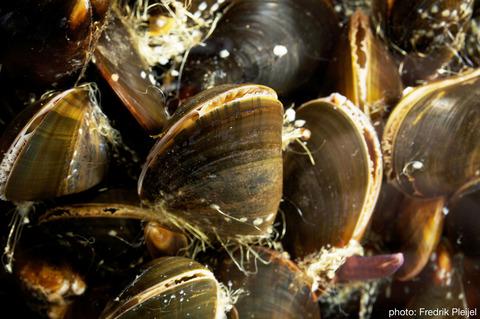当前位置:
X-MOL 学术
›
J. Appl. Ecol.
›
论文详情
Our official English website, www.x-mol.net, welcomes your
feedback! (Note: you will need to create a separate account there.)
Combining seascape connectivity with cumulative impact assessment in support of ecosystem‐based marine spatial planning
Journal of Applied Ecology ( IF 5.0 ) Pub Date : 2020-12-07 , DOI: 10.1111/1365-2664.13813 Per R. Jonsson 1, 2 , Linus Hammar 3 , Iréne Wåhlström 4 , Jonas Pålsson 3 , Duncan Hume 5 , Elin Almroth‐Rosell 4 , Martin Mattsson 6
中文翻译:

将海景连通性与累积影响评估相结合,以支持基于生态系统的海洋空间规划
更新日期:2020-12-07
Journal of Applied Ecology ( IF 5.0 ) Pub Date : 2020-12-07 , DOI: 10.1111/1365-2664.13813 Per R. Jonsson 1, 2 , Linus Hammar 3 , Iréne Wåhlström 4 , Jonas Pålsson 3 , Duncan Hume 5 , Elin Almroth‐Rosell 4 , Martin Mattsson 6
Affiliation

|
- Cumulative impact assessment (CIA) is a promising approach to guide marine spatial planning (MSP) and management. One limitation of CIA is the neglect of seascape connectivity, which may spread the impact of localized pressures to ambient areas, e.g. through lost dispersal and recruitment of organisms.
- We here, for the first time, incorporate seascape connectivity into a traditional CIA model using a connectivity matrix, exemplified by dispersal of propagules estimated through biophysical modelling. Two connectivity impacts are identified: the source impact represents downstream areas losing recruits because of reduced larval dispersal from sites affected by the pressure, and the sink impact represents loss of recruits originating from upstream areas prevented from settlement in the site affected by the local pressure.
- By including seascape connectivity in the Swedish MSP‐guiding CIA tool Symphony we demonstrate how to practically account for remote effects of local environmental impact. Our example on blue mussel shows how reducing mussel fitness in a given area may have impacts on mussels far from the acting pressures. Overall, results indicate that connectivity impact for blue mussels plays a minor role in most areas, <10% of the ordinary cumulative impact. However, in some smaller areas, e.g. on offshore banks and the Danish Straits, seascape connectivity may increase ordinary cumulative impact with 20%–30%. In an example of scenario‐based CIA analyses of MSP projections, we demonstrate how impacts of particular management actions, e.g. shipping rerouting and wind power developments, can be tracked far from the original area of influence.
- Depending on the dispersal ability of ecosystem components, a local pressure may impact a considerable area through seascape connectivity, transgressing management units and national borders. Although the mean connectivity impact may be modest for a single ecosystem component, the consideration of seascape connectivity across multiple ecosystem components may significantly alter the mapping of cumulative impact and the assessment of different MSP scenarios.
- Synthesis and applications. Our extension of Cumulative Impact Assessment offers a new method for mapping and practically integrating seascape connectivity with ecosystem‐based MSP and other spatial instruments for policy making, such as marine protected areas.
中文翻译:

将海景连通性与累积影响评估相结合,以支持基于生态系统的海洋空间规划
- 累积影响评估(CIA)是指导海洋空间规划(MSP)和管理的一种有前途的方法。CIA的局限性是忽视了海景的连通性,这可能会将局部压力的影响传播到周围区域,例如通过失去分散性和吸收生物。
- 我们在这里首次使用连通性矩阵将海景连通性纳入传统的CIA模型,以通过生物物理模型估算的繁殖体的扩散为例。确定了两个连通性影响:源头影响表示下游地区失去新兵,因为受压力影响的地点的幼虫扩散减少,下沉影响代表上游地区的新兵损失,阻止其受当地压力影响的地点定居。
- 通过将海景连接性纳入瑞典MSP指导的CIA工具Symphony中,我们演示了如何实际解决本地环境影响的远程影响。我们在蓝贻贝上的示例表明,降低给定区域中的贻贝适应度可能如何对贻贝产生影响,而不仅仅是作用压力。总体而言,结果表明,对蓝贻贝的连通性影响在大多数地区中所占比例较小,不到普通累积影响的10%。但是,在一些较小的区域,例如离岸银行和丹麦海峡,海景连通性可能使普通的累积影响增加20%至30%。在基于情境的CIA对MSP预测进行分析的示例中,我们演示了如何在特定的管理措施(例如运输路线变更和风力发电发展)的影响远离原始影响范围的情况下进行跟踪。
- 根据生态系统组成部分的扩散能力,局部压力可能会通过海景连通性,越过管理单元和国界影响相当大的区域。尽管对单个生态系统组件的平均连通性影响可能不大,但跨多个生态系统组件的海景连通性的考虑可能会显着改变累积影响的映射以及对不同MSP方案的评估。
- 综合与应用。我们对累积影响评估的扩展提供了一种新方法,可用于绘制海景连接以及将其与基于生态系统的MSP和其他用于决策的空间工具(例如海洋保护区)实际结合起来的方法。











































 京公网安备 11010802027423号
京公网安备 11010802027423号